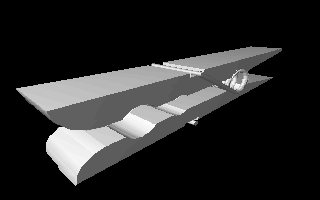Files
AutoShade wrote the rendering to an .RND file. In the first version, the .RND file was a 2D vector file, importable into applications such as Adobe Illustrator version 4. Later, when Autodesk added Gouraud shading, the .RND could also be a raster file.
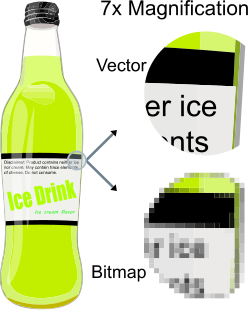
Vector graphics are computer graphics images that are defined in terms of 2D points, which are connected by lines and curves to form polygons and other shapes. Each of these points has a definite position on the x- and y-axis of the work plane and determines the direction of the path; further, each path may have various properties including values for stroke color, shape, curve, thickness, and fill. Vector graphics are commonly found today in the SVG, EPS and PDF graphic file formats and are intrinsically different from the more common raster graphics file formats of JPEG, PNG, APNG, GIF, and MPEG4.

Adobe Illustrator is a vector graphics editor developed and marketed by Adobe Inc. Originally designed for the Apple Macintosh, development of Adobe Illustrator began in 1985. Along with Creative Cloud, Illustrator CC was released. The latest version, Illustrator CC 2019, was released in October 2018 and is the 23rd generation in the product line. Adobe Illustrator was reviewed as the best vector graphics editing program in 2018 by PC Magazine.

Gouraud shading, named after Henri Gouraud, is an interpolation method used in computer graphics to produce continuous shading of surfaces represented by polygon meshes. In practice, Gouraud shading is most often used to achieve continuous lighting on triangle surfaces by computing the lighting at the corners of each triangle and linearly interpolating the resulting colours for each pixel covered by the triangle. Gouraud first published the technique in 1971.
Autodesk developed an application called Flimaker for MS-DOS, which converted .RND files into a format usable in Autodesk Animator. This could be used, in conjunction with AutoFlix, to create rudimentary 3D animations from AutoCAD source material.
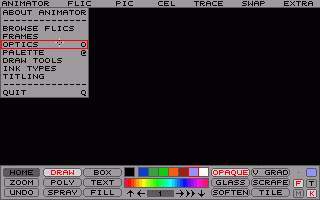
Autodesk Animator, also known as Ani Pro, PJ Paint, PJ, was a 2D computer animation and painting program in 1989 for PC with MS-DOS. The program was considered to be groundbreaking in the field of computer animation when it was initially released, and was very popular in the late 1980s and the early 1990s.
AutoCAD DXF is a CAD data file format developed by Autodesk for enabling data interoperability between AutoCAD and other programs.
Autodesk 3ds Max, formerly 3D Studio and 3D Studio Max, is a professional 3D computer graphics program for making 3D animations, models, games and images. It is developed and produced by Autodesk Media and Entertainment. It has modeling capabilities and a flexible plugin architecture and can be used on the Microsoft Windows platform. It is frequently used by video game developers, many TV commercial studios and architectural visualization studios. It is also used for movie effects and movie pre-visualization. For its modeling and animation tools, the latest version of 3ds Max also features shaders, dynamic simulation, particle systems, radiosity, normal map creation and rendering, global illumination, a customizable user interface, new icons, and its own scripting language.
DWG is a proprietary binary file format used for storing two- and three- dimensional design data and metadata. It is the native format for several CAD packages including DraftSight, AutoCAD, BricsCAD, IntelliCAD, Caddie and Open Design Alliance compliant applications. In addition, DWG is supported non-natively by many other CAD applications. The .bak, .dws, .dwt and .sv$ files are also DWG files.
Mental Ray is a production-quality rendering application developed by Mental Images. Mental Images was bought in December 2007 by NVIDIA. As the name implies, it supports ray tracing to generate images. The release of Mental Ray is discontinued as of 20 November 2017.

Autodesk Softimage, or simply Softimage is a discontinued 3D computer graphics application, for producing 3D computer graphics, 3D modeling, and computer animation. Now owned by Autodesk and formerly titled Softimage|XSI, the software has been predominantly used in the film, video game, and advertising industries for creating computer generated characters, objects, and environments.
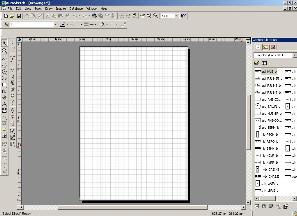
AutoSketch is a 2D vector drawing program by Autodesk. It is less powerful than Autodesk's AutoCAD and does not support 3D models.

Rhinoceros is a commercial 3D computer graphics and computer-aided design (CAD) application software developed by Robert McNeel & Associates, an American, privately held, employee-owned company founded in 1980. Rhinoceros geometry is based on the NURBS mathematical model, which focuses on producing mathematically precise representation of curves and freeform surfaces in computer graphics.
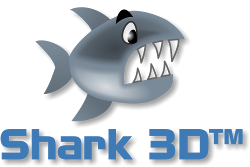
Shark 3D is a 3D software program and engine developed by Spinor for creating and running interactive virtual 3D worlds. It is used for video games, films, animated series, broadcasting graphics, and 3D industry applications.
Design Web Format (DWF) is a secure file format developed by Autodesk for the efficient distribution and communication of rich design data to anyone who needs to view, review, or print design files. Because DWF files are highly compressed, they are smaller and faster to transmit than design files, without the overhead associated with complex CAD drawings. With DWF functionality, publishers of design data can limit the specific design data and plot styles to only what they want recipients to see and can publish multisheet drawing sets from multiple AutoCAD drawings in a single DWF file. They can also publish 3D models from most Autodesk design applications.
The Open Design Alliance is a nonprofit organization of over 1,250 members in 50 countries which develops Teigha, a software development platform used to create engineering applications including CAD. The main idea is to make core graphics technology accessible to software developers allowing them to focus on application development.
TurboCAD is a CAD software application for 2D and 3D design and drafting which runs on Macintosh and Microsoft Windows operating systems.
BricsCAD is a software application for computer-aided design (CAD), developed by Bricsys nv. The company was founded in 2002 by Erik de Keyser, a longtime CAD entrepreneur. In 2011 Bricsys acquired the intellectual property rights from Ledas for constraints-based parametric design tools, permitting the development of applications in the areas of direct modeling and assembly design. Bricsys is headquartered in Ghent, Belgium, has additional development centers in Nizhny Novgorod and Novosibirsk, Russia; Bucharest, Romania and Singapore. Bricsys is a founding member of the Open Design Alliance, and joined the BuildingSMART International consortium in December of 2016.
3D computer graphics software refers to programs used to create 3D computer-generated imagery.
Cyber Studio CAD-3D is a 3D modeling and animation package developed by Tom Hudson for the Atari ST computer and published by Antic Software. The package is a precursor to 3D Studio Max.
Shade 3D is a 3D modeling, rendering, animation, 3D printing computer program was developed by e frontier Japan and published by Mirye Software. From 2013 October, Shade 3D development team formed a new company called Shade3D Co.,Ltd. and continue to develop and market the program. After terminated the sales agreement with e frontier Japan and Mirye Software by the end of December 2014, Shade3D company is now developing and marketing Shade 3D products in Japan and worldwide exclusively.
iClone is a real-time 3D animation and rendering software program that enables users to make 3D animated films. Real-time playback is enabled by using a 3D videogame engine for instant on-screen rendering.
